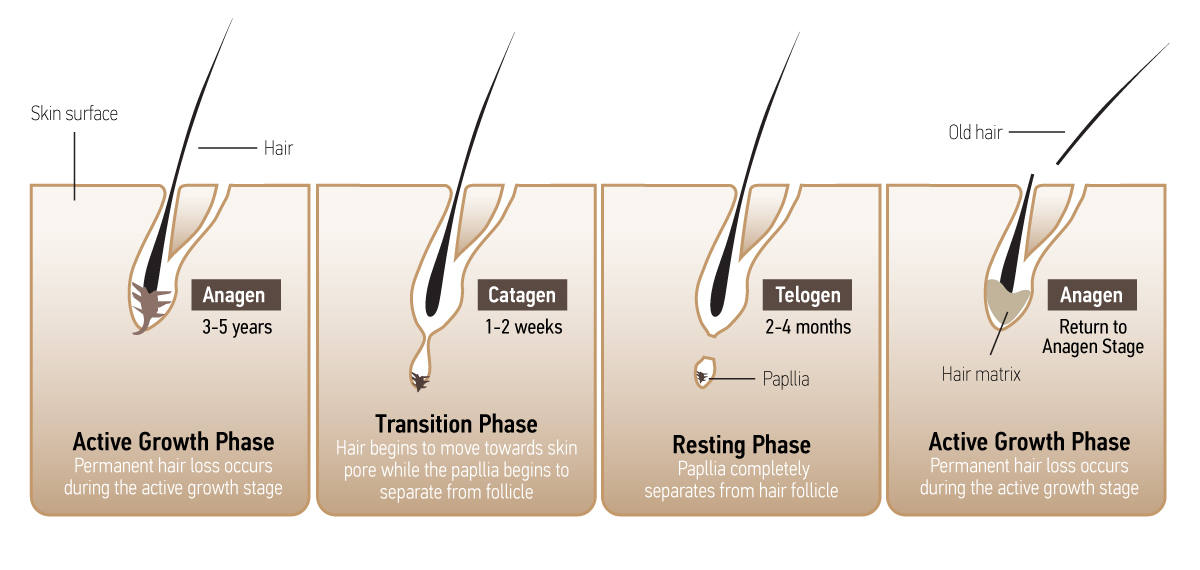Hair drug testing allows the detection of drugs for up to one year prior to the date of sampling however it is important to be aware of “Sleeping Hair”. Sleeping hair, also known as “Latent Hair” or "Resting Hair", is the 3rd phase of the hair cycle which is called the Telogen phase.

Why is the Hair Cycle important for Family Court Matters?
When instructing an expert Drug & Alcohol testing laboratory the question often asked is; Can you determine the month that drugs were used and when the donor stopped using drugs?
The short answer to this is yes but the interpretation of the results is of critical importance. For example if a donor had been using Cocaine or Heroin on a daily basis, it can take up to six (6) months for a sample of hair to show as negative.
If a donor has used drugs in the past, then it will be important to ensure that segmented (month-by-month) testing is carried out, as this will help the expert witness in their interpretation.
One of the reasons for this is Sleeping Hair.
At any one time 10-15% of head hair is in the Sleeping Hair cycle. The Sleeping Hair (Telogen) part of the cycle can last for up to six months.
During this phase the hair does not grow and neither does it fall out. It simply stays in place.
If you imagine that a long term daily user of Cocaine, Heroin or any other type of drugs will have the metabolites of the drug (the parts hair drug testing laboratories test for) throughout their entire hair - 100% coverage. Lets assume the levels in the hair are at level 1,000ng/pg.
If the user stops taking the Drugs then the following month, which should have seen 1cm of growth, 10-15% of the hair will not have grown. Therefore the level of drugs the following month will be 10-15% which is up to 150ng/pg.
As the Society of Hair Testing (SohT) cut-off level is 0.2ng/pg for Cocaine the 150 is well over the positive. The following month will show 22.5, then 3.37 and so on.
By the sixth month, the levels of the drugs taken within the hair will be below the SoHT positive cut-off level.
Is hair drug testing accurate if this is true?
Hair Testing is highly accurate as in the case above the equipment has detected drugs and their metabolites in the hair and the hair does indeed contain the drugs. The missing element at this stage is the expert who will interpret the results.
It is important that the expert providing the interpretation is given case history on the donor being tested. Information such as previous drug use, frequency and timing can be used in combination with the results to establish if sleeping hair could be responsible for a present day positive hair strand test.
Provided that segmented hair testing has been carried out, then the expert witness will also be to advise if the results are more likely to be be from a donor who is still using drugs vs a donor who has now stopped using drugs.
Have you ever experienced results that don’t align to donor claims?
DNA Legal have been asked to look at hundreds of cases from other laboratories where donors claim they have stopped using drugs yet the results still show as positive. If you have a case similar to this, whereby your client claims to have stopped using yet the results are positive, please contact DNA legal and we would be happy to carry out a quick review for you and advise the best route forward.
The test results may be accurate but has the interpretation been completed correctly?

